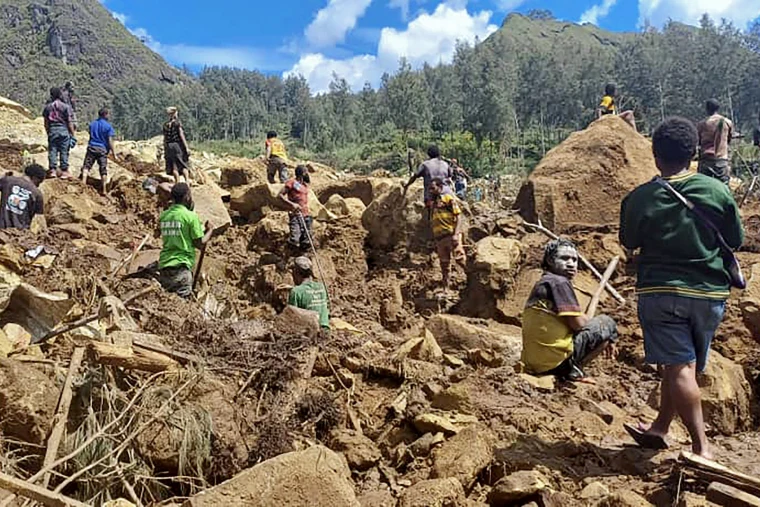
Rescue crews in Papua New Guinea don’t anticipate discovering survivors in the landslide
The precise number of deaths beneath nearly two stories of debris and muck from a catastrophic landslide on Thursday is still unknown, but it might be in the hundreds to thousands. Papua New Guinea ruled out finding survivors under the rubble.
Due to the area’s tribal strife, destroyed main road bridge, and hazardous mountainous terrain, heavy equipment and assistance have been sluggish to arrive.
Chairperson of the Enga province disaster committee Sandis Tsaka told Reuters, “At this point, no bodies are expected to be alive under the debris, so it’s a full recovery operation to recover any human remains.”
The number of victims buried beneath portions of the mountain that fell upon the Yambali village in the Enga district last Friday at around three in the morning is still being determined by officials.
In the absence of a current census—the last reliable one was conducted in 2000—officials are estimating the total number of deaths by consulting with local leaders and using incomplete voter data.
The PNG government claims that nearly 2,000 people may have been buried alive. The number of fatalities was estimated by the U.N. to be about 670, although a local businessman and former official told Reuters that the number was more like 160.
According to Tsaka, the death toll was still unknown to the authorities, although it would be a “significant number.”
“There could be 2,000 or as few as hundreds. Because it’s hard to tell how many individuals were there at the time, I wouldn’t rule out 2,000 completely, but I can’t give you a firm answer until we finish the social mapping,” he said.
According to Tsaka, two of the six bodies that have been found so far didn’t reside in the disaster area, which supports the belief of authorities that there was a lot of mobility between the towns.
According to Tsaka, dozens of military, engineers, geology specialists, and public health officials have arrived at the location. Heavy machinery was supposed to be used by rescue teams on Thursday, but its usage was postponed due to unstable ground.
Thousands of locals are being prepared to evacuate in the event that the landslide moves much farther downhill.
“Even at night, we don’t sleep. “We fear that more of the mountain will collapse and kill us all,” Frida Yeahkal, a 20-year-old local, told Reuters.
ENDOMIC RISKS
According to the United Nations migration agency’s most recent statement, the landslide has buried neighboring creeks and streams and poisoned the village’s main water supplies, greatly increasing the danger of disease epidemics.
The lack of alternate sources, including rain collecting tanks, in the majority of homes and the inadequacy of water treatment techniques exacerbated the scarcity of drinking water, the report stated.
One in five of the 1,650 people the agency believes to have been displaced are younger than six years old.
“What is in store for the living? Where we shall go for food and shelter is unknown to me. All of our homes and gardens have been devastated,” Yuri Yapara, a community leader, told Reuters.
All Categories
Recent Posts
Tags
+13162306000
zoneyetu@yahoo.com



